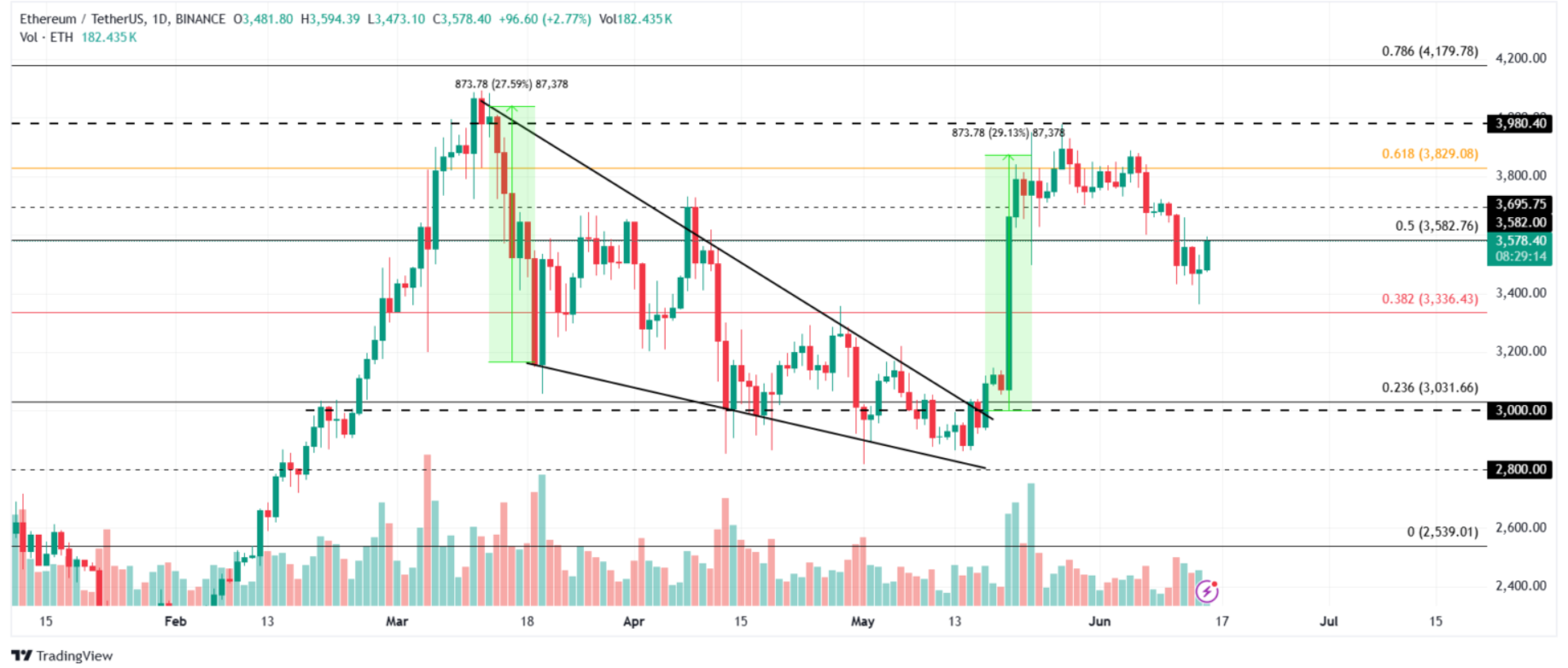Bitcoin price fluctuations have accelerated altcoin sales, leading to double-digit declines. Since BTC price couldn’t sustain higher levels, notable peaks didn’t form in altcoins. Those that diverged positively saw rapid sales. So, what’s the latest on Ethereum (ETH)?
Why is Ethereum Falling?
ETH price is trading at $3,568 at the time of writing and recently dropped below $3,400. There are two main reasons for this. The first is the general negativity in risk markets due to the Fed. The second is the SEC not accelerating the approval process for the S-1 Form that would allow spot Ethereum ETFs to trade on the stock market.
Gensler recently stated that he hopes the process will be completed before the end of summer. Experts suggest that if the process goes smoothly, S-1 Form approvals could come by mid-July. Everyone expected the ETFs to start trading before the end of June.
Ethereum (ETH) Commentary
Ethereum‘s price drop was triggered by increased skepticism among ETH investors. While investors avoided the risk of further losses, the patient ones saw more losses. Looking at the network’s realized profit and loss indicator, sales have increased over the past few days.

Sales by long-term investors are also evident in the Age Consumed of ETH indicator. The Age Consumed metric shows how long the relevant assets have been held. Ethereum’s price of $3,578 is facing resistance from the 50% Fibonacci Retracement level. If the bulls can’t make strong closures above this resistance, the risk of continued decline for ETH is significant.

If the resistance level is surpassed, a return to $3,800 is likely with the recovery of losses. As the ETH ETF launch date approaches, two significant issues will emerge. The first is the potential for a “sell the news” scenario similar to the BTC ETF approval. The second is the potential for the ETHE trust, issued by Grayscale with massive Ether reserves, to experience a period similar to GBTC. Investors who bought ETHE at a 50% discount about a year ago will have strong selling motivation with the launch, benefiting from both the spot price increase and the elimination of the negative premium.










